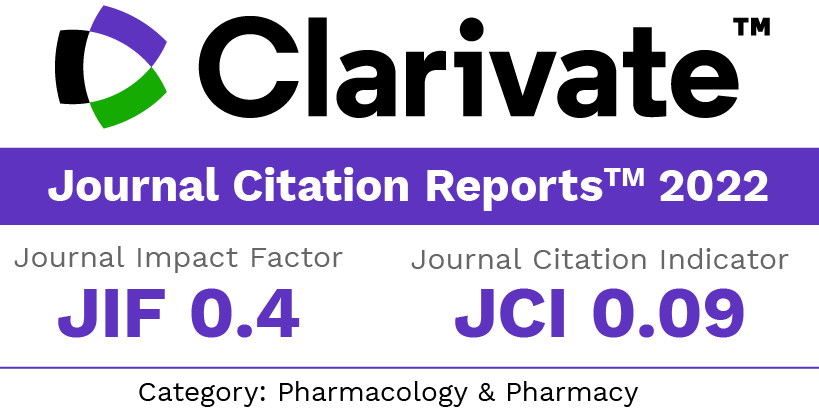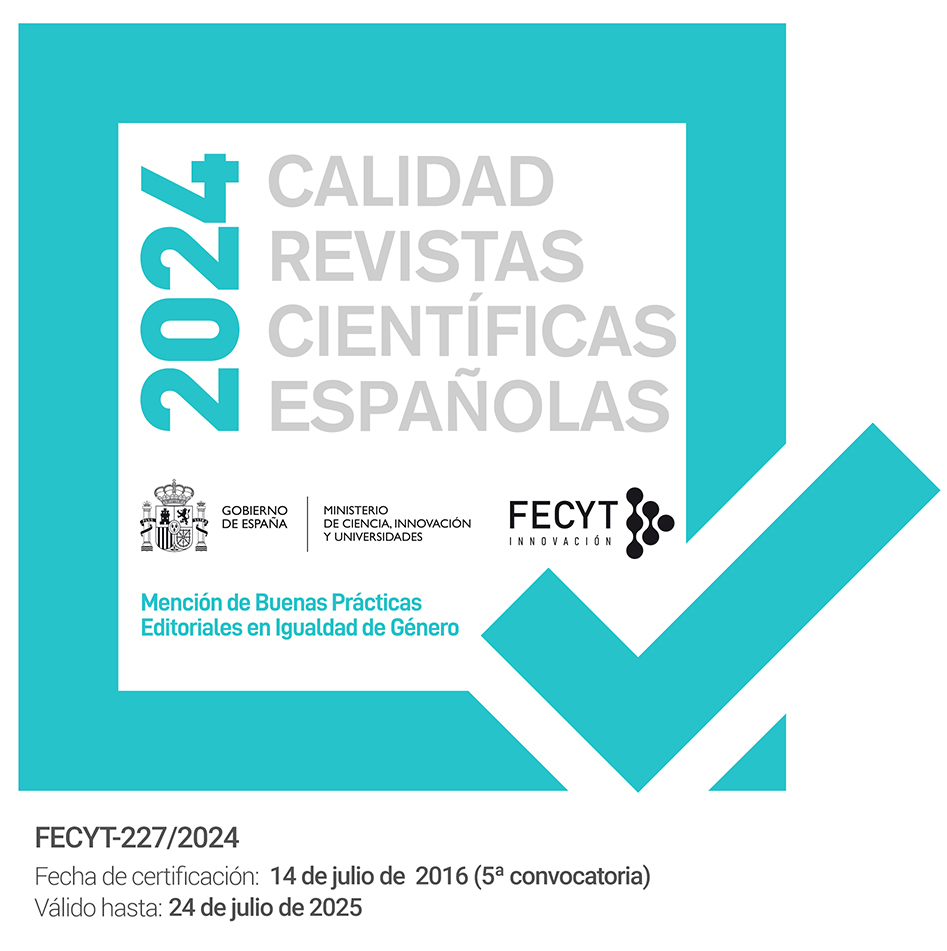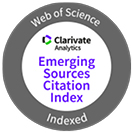Determinación de vitaminas del Complejo B en Arthrospira maxima por cromatografía líquida de alta resolución
Keywords:
Vitaminas del complejo B, Métodos de extracción, Arthrospira máxima, Cromatografía liquida de alta resoluciónAbstract
Se diseñan dos métodos para la extracción de las vitaminas del complejo B en muestras de Arthrospira maximacubana. Para la determinación, se emplea un sistema HPLC formado por una columna de octadecilsilano y fasesmóviles de metanol - agua - ácido fosfórico 0.1 mol/L (20:79.5:0.5) para el análisis de la cianocobalamina y (30:69.5:0.5)para el resto de las vitaminas, empleando hexanosulfonato sódico 5 mM en ambos casos. Las velocidades de flujoson de 1 y 0.8 mL/min respectivamente. La determinación se realiza a 362 y 270 nm. Se observó que la Arthrospiramaxima cultivada en Cuba constituye una rica fuente de vitaminas del grupo B presentando un contenido promediode 3.1 mg/10g de tiamina, 4.0 mg/10g de riboflavina, 9.0 mg/10g de piridoxina, 0.29 mg/10g de cianocobalamina, 21mg/10g de ácido nicotínico y 26 mg/10g de nicotinamida.Downloads
References
Li, S. (1989). “Cultivation and application of microalgae in People´s Republic of China”. In Algae Biotechnology Symposium, London.
Osse, A.C. (1990). “A utilizaçao de algas marinhas como aditivo para rascoes animais”. Instituto de Investigaçoes Pesqueiras, Brasil.
Mc Hugh, D.J. (1991). “Worldwide distribution of commercial resources of seaweed including”. GELIDUM Hidrobiología, 221,19-29.
Molloy F. J. 1990. “Utilized and potentially utilizable seaweed on the Namibian coast: Biogeography and accessibility”. Hydrobiologia, 204/205: 293-299.
Cumberbatch, J., Benítez, I., Torres, J.L., Travieso, L., Rivas, E. (1995). “Secado de biomasa de Arthrospira máxima utilizando spray dryer”. I Taller Internacional de Microalgas y Plantas Acuáticas (Cuba).
Guglielmi, G., Rippka, R., Tandeau, N. (1993). “Main properties that justify the different taxonomic position of Spirulina spp. and Arthrospira spp. Among cyanobacteria”. Bulletin de lnstitute Océanographique. Monaco. Número especial 12.
AOAC, Association of Official Analytical Chemist. Official Methods of Analysis (1990). 15th Ed. Washington D.C.
Kwok, P.C., Rose, W.P., Tabor, R., Pattison, T.S. (1981). “Simultaneous determination of vitamins B1, B2, B6, and niacinamide in multivitamin pharmaceutical preparations by paired-ion reversed-fase high pressure liquid chromatography”. J. Pharm. Sci., 70, 1014.
Vanderslice, J-T., Brownlee, S.R., Cortissoz, M.E. (1984). “Liquid Chromatographic determination of vitamin B-6 in foods”. J. Assoc. Off. Anal. Chem. 67(5), 999-1007.
Gennaro, M.C. (1991). “Separation of agua-soluble vitamins by reversed-fase ion-interaction-reagent high performance liquid chromatography: application to multivitamin pharmaceuticals”. J. Chromatogr. 29(9), 410-415.
Fujiwara, S., Iwase, S., Honda, S. (1988) “Analysis of agua-soluble vitamins by micellar electokinetic capillary chromatography”. J. Chromatogr. 447(1), 133-140.
Boso, R.L., Bellini, M.S., Miksik, I., Deyl, Z. (1995) “Microemulsion electrokinetic chromatography con different organic modifiers: separation of agua- and lipid-soluble vitamins. J. Chromatogr. A. 709(1), 11-19.
Hsieh, Y., Kuo, K. (1997) “Separation of retinoids by micellar electrokinetic capillary chromatography”. J. Chromatograph. A. 761(1-2), 307-313.
Buskov, S., Müller, P., Sorensen, H., Sorensen, J.C., Sorensen, S. (1998) “Determination of vitamins in food based on supercritical fluid extraction prior to micellar electrokinetic capillary chromatographic analyses of individual vitamins”. J. Chromatograph. A. 802 (1), 233-241.
Rizzolo, A., Polesello, S. (1992). “Chromatographic determination of vitamins in foods”. J. Chromatograph., 624, 103-152.
Lam, F.L., Molcomb, I.J., Fusaki, S.A. (1984). “Liquid chromatographic assay of ascorbic acid, niacinamide, piridoxina, tiamina and riboflavina in multivitamin-mineral preparations”. J. Assoc. Off. Anal. Chem., 67(5), 1007-1011.
González, H.M., Arques, J.M., Font, G., Mañes, J. (1987). “Determinación de vitaminas del grupo B mediante cromatografía líquida de alta resolución”. An. Real Acad. Farm. , 53, 602-608.
Augustin J., Klein B. P., Becker D., Venuggopal P. B. (1985). “Methods of vitamin assay”, Wiley Interscience, USA, p. 497-502.
Dalbacke, J., Dahlquist, J. (1991). “Determination of vitamin B12 in multivitamin-multimineral tablets by highperformance liquid chromatography after solid fase extraction”. J.Chromatogr., 541, 383-392.
Quattrocchi, O.A., Abelaira, S., Laba, F. (1992) “Introducción a la HPLC”. Merck Argentina (Buenos Aires), P. 40-63.
Henrikson, R. 1994. “Microalga Spirulina: Superalimento del futuro”. Ed. Urano, EU, p.1-28.
Downloads
Published
How to Cite
Issue
Section
License
The articles, which are published in this journal, are subject to the following terms in relation to the rights of patrimonial or exploitation:
- The authors will keep their copyright and guarantee to the journal the right of first publication of their work, which will be distributed with a Creative Commons BY-NC-SA 4.0 license that allows third parties to reuse the work whenever its author, quote the original source and do not make commercial use of it.
b. The authors may adopt other non-exclusive licensing agreements for the distribution of the published version of the work (e.g., deposit it in an institutional telematic file or publish it in a monographic volume) provided that the original source of its publication is indicated.
c. Authors are allowed and advised to disseminate their work through the Internet (e.g. in institutional repositories or on their website) before and during the submission process, which can produce interesting exchanges and increase citations of the published work. (See The effect of open access).


















